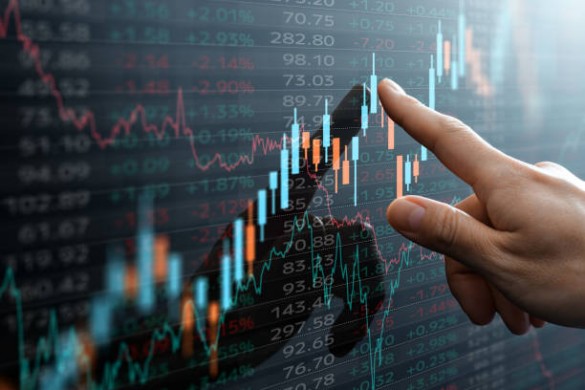Coca-Cola’s share price responded well to the changes Roberto Goizueta and Don Keough introduced after 1981, rising 4-fold in the six years to September 1987. Then the stock market crash of October 1987 brought it down by a quarter – see Figure. And yet the annual report for 1987 showed good things happening to the underlying business. Revenue was up 9.8% at $7.7bn; after-tax income was over $900m in both 1986 and 1987, almost double that of 1981; return on equity was 27%; soft drink volume up 6% and now available in more than 155 countries, accounting for more than 44% of all soft drinks sold in the world[1], that is, 524m servings per day.
Coca-Cola’s share price (after allowing for subsequent splits) 1980 – 1990

The company exuded confidence in future growth, stating in the report, “Coca-Cola, it sometimes seems, is everywhere. And yet, given our recent growth and our worldwide opportunities, it is apparent that the size and scope of our system, the pervasiveness of our products and trademarks, can only increase.”[2]
Buffett agreed, and started accumulating shares in noticeable amounts in the fall of 1988. Over in Atlanta senior managers were naturally curious (perhaps concerned) about all this activity on the stock register. Upon investigation, they noticed that most of the purchases were made by a midwestern brokerage. It didn’t take long for Keough to think of his old friend as the likely buyer. He gave him a call, “Warren, the trading in Coke stock suggests that someone is buying a lot of it. Could that possibly be you?” Buffett response delighted Keough, “Well, keep it quiet between you and Roberto. But yep, it’s me.”[3]
And Buffett carried on buying. So, it wasn’t as deal as such, just Buffett buying a large stake in 1988 (4.2% of Coca-Cola’s stock) and adding more in the first half of 1989 to take Berkshire’s holding to 7%. Shortly afterwards he was invited to join Coca-Cola’s Board of directors.
Buffett poked fun at himself for not recognising the value of Coca-Cola shares much earlier in his 1989 letter to shareholders:
“This Coca-Cola investment provides yet another example of the incredible speed with which your Chairman responds to investment opportunities, no matter how obscure or well-disguised they may be. I believe I had my first Coca-Cola in either 1935 or 1936. Of a certainty, it was in 1936 that I started buying Cokes at the rate of six for 25 cents from Buffett & Son, the family grocery store, to sell around the neighborhood for 5 cents each. In this excursion into high-margin retailing, I duly observed the extraordinary consumer attractiveness and commercial possibilities of the product.
“I continued to note these qualities for the next 52 years as Coke blanketed the world. During this period, however, I carefully avoided buying even a single share, instead allocating major portions of my net worth to street railway companies, windmill manufacturers, anthracite producers, textile businesses, trading-stamp issuers, and the like. (If you think I’m making this up, I can supply the names.) Only in the summer of 1988 did my brain finally establish contact with my eyes.
“What I then perceived was both clear and fascinating. After drifting somewhat in the 1970’s, Coca-Cola had in 1981 become a new company with the move of Roberto Goizueta to CEO. Roberto, along with Don Keough, once my across-the-street neighbor in Omaha, first rethought and focused the company’s policies and then energetically carried them out. What was already the world’s most ubiquitous product gained new momentum, with sales overseas virtually exploding.
“Through a truly rare blend of marketing and financial skills, Roberto has maximized both the growth of his product and the rewards that this growth brings to shareholders. Normally, the CEO of a consumer products company, drawing on his natural inclinations or experience, will cause either marketing or finance to dominate the business at the expense of the other discipline. With Roberto, the mesh of marketing and finance is perfect and the result is a shareholder’s dream.
“Of course, we should have started buying Coke much earlier, soon after Roberto and Don began running things. In fact, if I had been thinking straight I would have persuaded my grandfather to sell the grocery store back in 1936 and put all of the proceeds into Coca-Cola stock. I’ve learned my lesson: My response time to the next glaringly attractive idea will be slashed to well under 50 years.”[4]
There was a pause in the buying, 1990 – 1993, while the shares rose three-fold – see the next Figure. When the company came through with excellent numbers in the early 1990s (profits nearly doubled 1990-1994) Buffett and Munger still thought it a bargain and so after a few months of observing the share going nowhere during 1993 and early-1994 Berkshire bought some more, taking the stake to one-twelfth of all Coke’s shares, the largest shareholder.
Coca-Cola share price (adjusted for splits) 1987 – 1994

The 1994 purchases, even at a multiple of what was paid in 1988-9 were well worth it. The next figure shows Coca-Cola’s share trebling again over the rest of the 1990s.
Coca-Cola share price (adjusted for
………………To read more subscribe to my premium newsletter Deep Value Shares – click here http://newsletters.advfn.com/deepvalueshares/subscribe-1

 Hot Features
Hot Features













